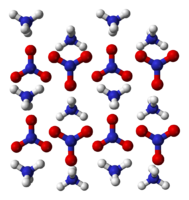
Photo from wikipedia
The present work proposed an evaluation of the physiological performance, yield and chemical profile of the essential oil obtained from leaves and roots of Eryngium foetidum L. (Apiaceae) cultivated using… Click to show full abstract
The present work proposed an evaluation of the physiological performance, yield and chemical profile of the essential oil obtained from leaves and roots of Eryngium foetidum L. (Apiaceae) cultivated using different fertilizer sources. The other gas exchange and chlorophyll a fluorescence parameter was not different, suggested that the photosystem II was not affected by the different fertilizer sources. Highest essential oil yield was obtained in leaf samples cultivated with the mineral fertilizer (0.18%) and control conditions (0.22%), while it was obtained by mineral fertilization in the case of root samples (0.22%). The principal component analysis - PCA and hierarchical cluster analysis - HCA showed two groups: the first was formed by roots (OrgR, MinR and ConR), characterized by the constituents 2,3,4-Trimethylbenzaldehyde, Muurola-4,10(14)-dien-1β-ol, Isoshyobunone, para-Mint-1,5-dien-8-ol, 6-Canphenone, (E)-γ-Atlantone and (E)-β-Farnesene; and the second group formed by leaves (OrgF, MinF, ConF), related to (2E)-2-Dodecenal, t-2-Tetradecenal, 1-Dodecanal, 1-Decanal, Tetradecanal, γ-Terpinene, Mesitylene and ρ-Cymene.
Journal Title: Natural product research
Year Published: 2020
Link to full text (if available)
Share on Social Media: Sign Up to like & get
recommendations!